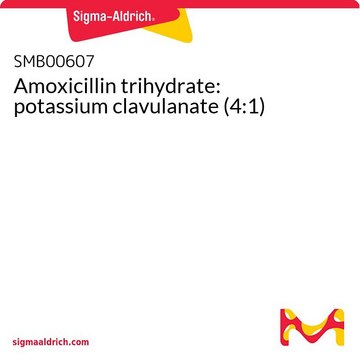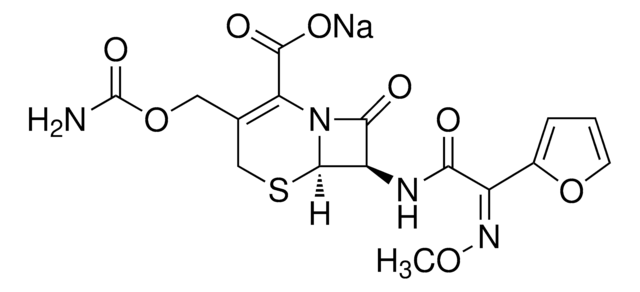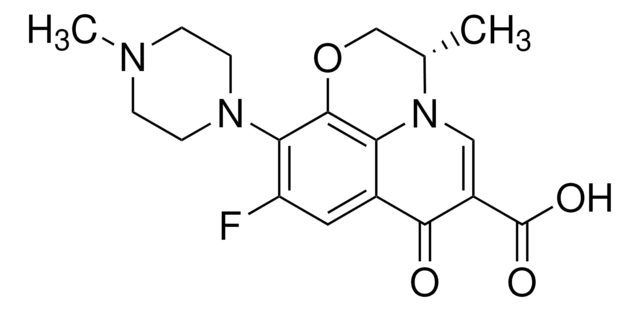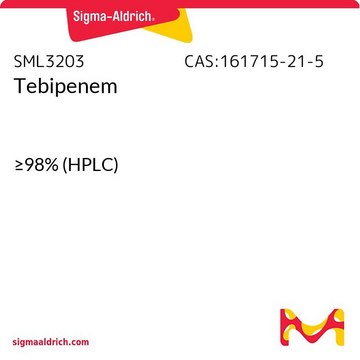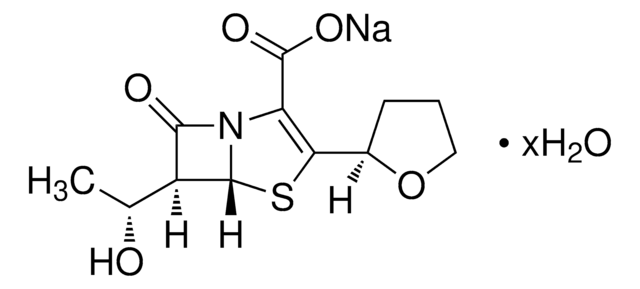Kluczowe dokumenty
A8523
Amoxicillin
95.0-102.0% anhydrous basis
Synonim(y):
Amoksycylina bezwodna, Penicylina D-(-)-α-amino-p-hydroksybenzylowa
Wybierz wielkość
Wybierz wielkość
About This Item
Polecane produkty
Poziom jakości
Próba
95.0-102.0% anhydrous basis
Formularz
powder
spektrum działania antybiotyku
Gram-negative bacteria
Gram-positive bacteria
Tryb działania
cell wall synthesis | interferes
temp. przechowywania
2-8°C
ciąg SMILES
CC1(C)S[C@@H]2[C@H](NC(=O)[C@H](N)c3ccc(O)cc3)C(=O)N2[C@H]1C(O)=O
InChI
1S/C16H19N3O5S/c1-16(2)11(15(23)24)19-13(22)10(14(19)25-16)18-12(21)9(17)7-3-5-8(20)6-4-7/h3-6,9-11,14,20H,17H2,1-2H3,(H,18,21)(H,23,24)/t9-,10-,11+,14-/m1/s1
Klucz InChI
LSQZJLSUYDQPKJ-NJBDSQKTSA-N
Szukasz podobnych produktów? Odwiedź Przewodnik dotyczący porównywania produktów
Powiązane kategorie
Opis ogólny
Zastosowanie
Działania biochem./fizjol.
Inne uwagi
Hasło ostrzegawcze
Danger
Zwroty wskazujące rodzaj zagrożenia
Zwroty wskazujące środki ostrożności
Klasyfikacja zagrożeń
Resp. Sens. 1 - Skin Sens. 1
Kod klasy składowania
11 - Combustible Solids
Klasa zagrożenia wodnego (WGK)
WGK 2
Temperatura zapłonu (°F)
Not applicable
Temperatura zapłonu (°C)
Not applicable
Środki ochrony indywidualnej
dust mask type N95 (US), Eyeshields, Faceshields, Gloves
Wybierz jedną z najnowszych wersji:
Certyfikaty analizy (CoA)
Nie widzisz odpowiedniej wersji?
Jeśli potrzebujesz konkretnej wersji, możesz wyszukać konkretny certyfikat według numeru partii lub serii.
Masz już ten produkt?
Dokumenty związane z niedawno zakupionymi produktami zostały zamieszczone w Bibliotece dokumentów.
Klienci oglądali również te produkty
Nasz zespół naukowców ma doświadczenie we wszystkich obszarach badań, w tym w naukach przyrodniczych, materiałoznawstwie, syntezie chemicznej, chromatografii, analityce i wielu innych dziedzinach.
Skontaktuj się z zespołem ds. pomocy technicznej


